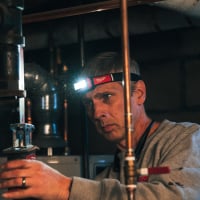Best Of
Re: "Yelp"/ angi list for contractors.
The most uncomfortable part of running a Plumbing & Heating business is discussing $$ & payments. Get it out of the way as fast as possible ...a ball park range is better than nothing. This, especially holds true with relatives, friends & people you know. Get it out of the way and be 100% clear, cogent & concise.
If there's any waffling or trifling, it's better you both know BEFORE a piece of pipe is purchased or installed. Worst case, we shake hands and go our separate ways. Mad Dog
Re: who makes the Webb Pure Pro?
If you're looking to keep the install economical, I'd try it out, Gary. Mad Dog
Re: who makes the Webb Pure Pro?
@Steamhead ok got it, is it a decent unit? On par with all the others? I have a very small 145 sq ft job to hammer out
 GW
GW
Re: who makes the Webb Pure Pro?
Crown is ok? I've done mostly Utica and Peerless with gas steam
 GW
GW
Re: Boiler Header Manifold
US made black fittings would be my first choice if it were mine. Copper would be my second. Leave a capped tee on the end and space to add more zones if needed. A caleffi hydraulic separator makes a nice job for air and dirt separation with hydraulic separation. I'd rather see fittings and zone/isolation/balancing valves and flow meters as separate parts vs an engineered manifold with proprietary parts that might disappear.
Re: Boiler Header Manifold
Just trying to do a professional job that's all. Customer is paying six figures for a boiler room and I think he wants a six figure professional job in return.
And I'm not hiding it with insulation lol. The old Weil McLain 1086 supplied all the heat for the basement by just sitting.
Re: Confused by basement runs in school 2 pipe system
@mattmia2 Its normal to have a balancing cock on the feedwater pump discharge to:
Keep the motor from overloading. The feed pump will pump more water with the boiler at 0 pressure than it will at say 10psi so the balancing valve needs to be adjusted for that.
Also it should be adjusted to keep the pump on for a decent time and not shortcycle on and off with the pump control.
One of the most popular valve for feed water control are the Belimo valve (although you can uses any motorized valve) 120 volt is typically used.
The pump control on the boiler (usually a McDonnell Miller #150) makes contact on a boiler water level drop and opens the feed water valve. When the valve is partially open the end switch on the feed water valve closes to start the feed water pump.
The feed valve can either spring return to a closed position or be driven closed SPDT
Re: Old fridge
I actually installed two of these back in the 90s. Funny story about that but for another day.

